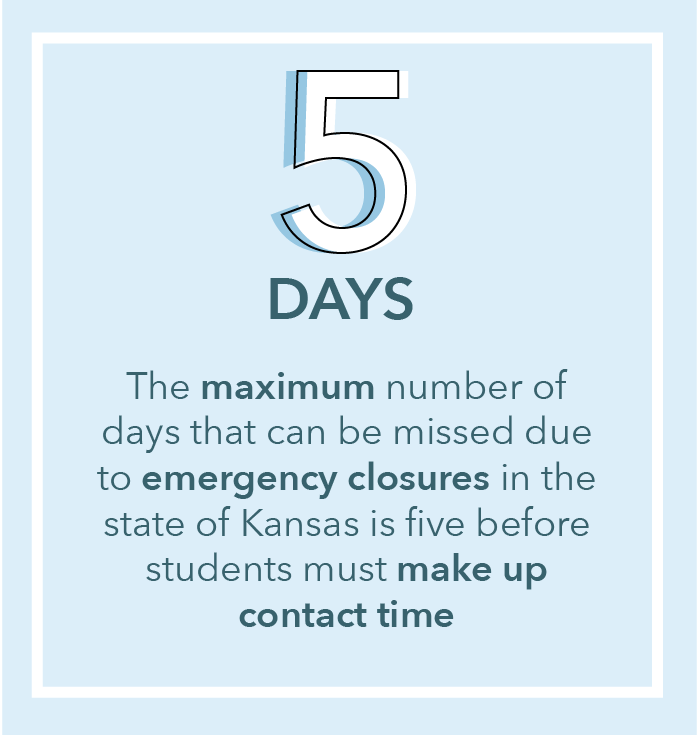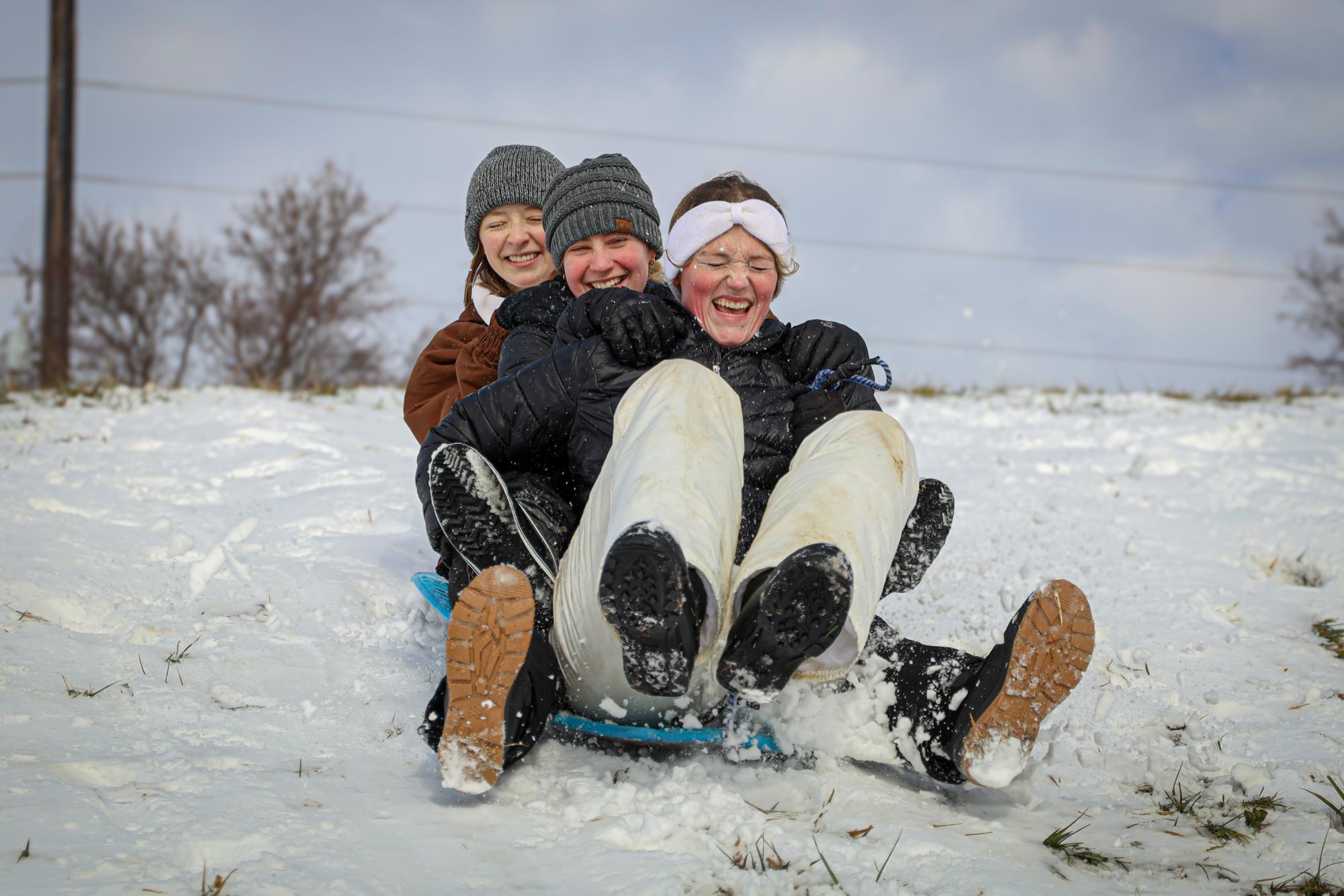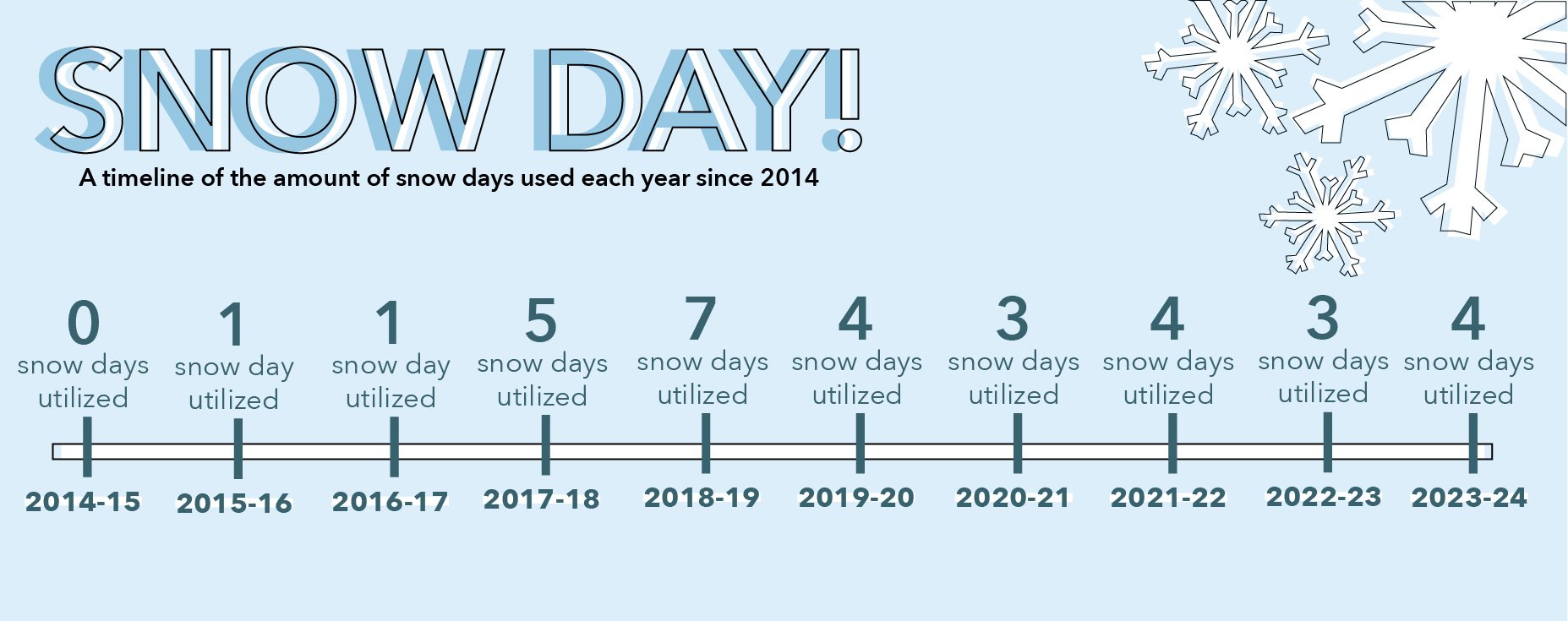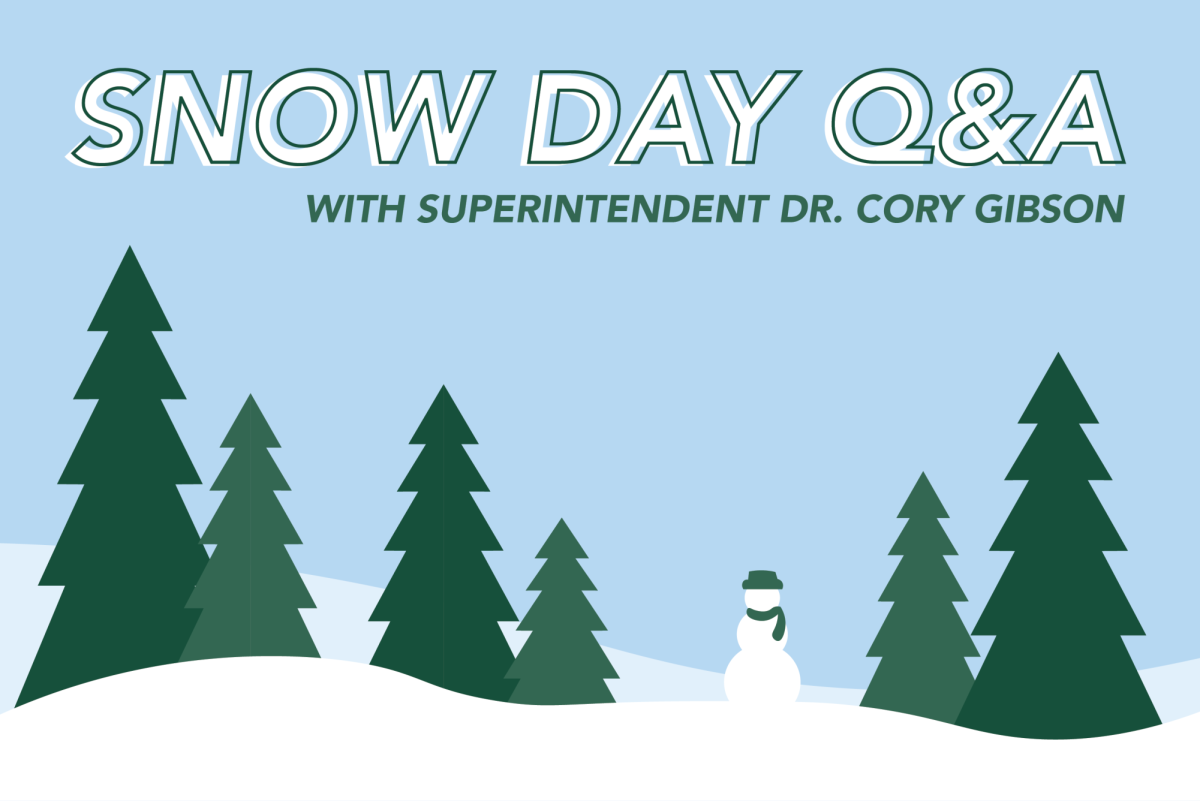*Update: With the cancellation of school Monday, Jan. 22, the district has now used all of its “free” snow days. Any additional days canceled due to weather or other reasons will need to be made up, either by adding minutes to the school day or converting days off scheduled in April to school days.
Mill Valley News: What are the criteria for having a snow day? Is it consistent or is it flexible?
Cory Gibson: USD 232 is aware of the implications of opening schools during less than perfect conditions and of delaying or closing schools when poor weather conditions exist, or are predicted. We operate within an area covering nearly 100 square miles of Johnson County. The safety of our students, staff, and parents remains our primary consideration. Because the district encompasses 100 square miles of the county, the weather can vary significantly, as can road conditions, in different parts of the county. Major roadways may be in good driving condition, but neighborhood and rural roads may remain treacherous. District students typically travel to school in five ways. Some ride on school buses, some walk to schools or bus stops, some are driven by

their parents, some drive themselves, and some are driven by other students. When the school system considers the impact of weather conditions on the ability to open schools, it considers all these methods of transportation … The school district takes into consideration a number of factors during inclement weather. We consider parking lot and sidewalk conditions, temperature and wind chill, amount of snow and/or ice, current and future weather forecasts, as well as city and county road conditions. The district understands no perfect decision exists. Our goal is to err on the side of caution for the safety of all. When everything is said and done, each parent should be prepared to make the best decision for his or her own child.
MVN: How much does our district’s choice to cancel school depend on that of other districts, if at all?
CG: Within the Kansas City metro, our districts and schools are relatively compacted, therefore, it is often you will see districts collaborate and make a decision in the same time frame as we are experiencing similar road/weather conditions and forecasts.

MVN: Who is involved in making the decision to have a snow day? What does that conversation look like?
CG: There are many team members that provide input regarding a potential cancellation. Days/hours in advance we are typically notified by the Kansas City National Weather Service that weather may impact school and activities. Meteorologists meet virtually with district level leaders to review the forecast and potential impacts. During a weather event, we typically receive two updated written forecasts per day. If the cancellation is made based on forecasts, the conversation begins hours before a decision is made. If the decision is based on current road conditions, our team including our two assistant superintendents, and safety/transportation coordinator, and I drive various routes within the district to determine if roadways are safe. If this is an evening decision, we typically drive the roadways between 8-9 p.m., if it’s a morning of decision, we begin driving at 3:45 a.m..
MVN: Other than excessive snow, what other reasons might districts have for canceling school due to weather?
CG: As is the case today, several days of below zero temperatures and wind chill levels has resulted in concerns related to children waiting at bus stops, student pedestrians, and bus transportation related issues. Diesel buses can become increasingly unreliable when unprecedented conditions persist as they have now for days. Several of our buses would not start yesterday and some districts in the metro experienced transportation failure in the metro over this past weekend. When a bus fails, students can be left in a bus without heat for an extended period of time. Likewise, the heating system in schools can be placed under considerable strain, and failure can lead to classrooms being uncomfortable.

MVN: If we go over the snow day ‘limit,’ where would we add more days to the school year?
CG: Districts are required to provide a set number of instructional hours per school year as set by state statute. We have five days built into this school year’s calendar. Options we could consider to make up the time would be converting days off from school for students to in school earning days. Examples of this could be April 18th/19th of this school year. We also could consider adding time to each day. Exceeding the number of allotted snow days has occurred two times within the last five years in USD 232. In the sixteen years I’ve served as a district leader, we’ve never had to make up school days, however, this year (my first in USD 232) may be different.
MVN: What else should students know about snow days and how they are decided?
CG: Our greatest desire is for school to be in session, however, the safety of our students and staff is our number one priority.












